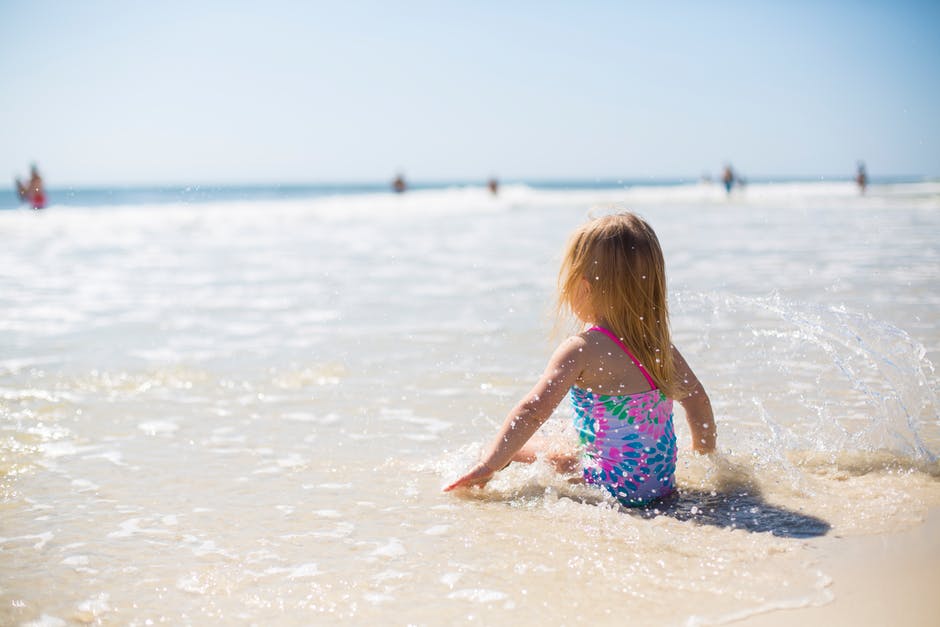
Sunburn is extremely painful, and it can have long-lasting effects on the body, especially if it’s left untreated.
If your child is a recent victim of sunburn, you may wonder when it’s time to pay the doctor a visit.
Read on to learn more about this skin affliction and when you should seek treatment for your child.
Kids and Sunburn: The Basics
When your child’s skin is exposed to UV radiation, those rays can cause damage to their skin. Too much exposure to the sun or multiple sunburns can cause a variety of issues later in life. You can read more now to find out about the lasting effects it has on children.
While most instances of sunburn cause visible redness, sometimes there are issues you can’t see right away. Children spend a lot of time outdoors on playgrounds, in the swimming pool, or at the beach.
Children with fair skin, moles, or freckles could develop skin cancer later in life. Those with a family history of skin cancer are also more vulnerable. Too much exposure to sunlight in children under 18 will cause the most damage.
UV rays are the most powerful in the summer when the sun is located directly overhead. The hours of 10 a.m. to 3 p.m. tend to be the most dangerous, so it’s important to practice proper sun protection, even in the wintertime.
Common Symptoms
Visible redness or swelling of the skin are two of the most common symptoms of sunburn in children and adults. Painful skin, blistering, and even a mild fever can also be associated with sunburn.
In some cases, children may experience chills, fatigue, and general weakness. Most people experience dry, flaking, and peeling skin that tends to itch a few days after being sunburnt.
How to Get Rid of Sunburn
Preventative measures like wearing sunscreen and staying in the shade are the best way to stop sunburn before it starts. However, it’s important that parents know how to treat sunburn once it happens.
First, have your child take a cool bath, or you can apply a cool compress directly onto the affected area. You can give your child ibuprofen or acetaminophen to help relieve pain.
A topical moisturizer like aloe vera gel or hydrocortisone cream can also help. Do not break blisters on your child’s skin or else it may result in an infection.
Make sure your child stays out of the sun until their skin is fully healed. Continue to apply moisturizer, even after the pain subsides. This will help soothe irritated skin and speed up the healing process.
How Long Does Sunburn Last?
The amount of time sunburn lasts can depend on a few factors including the severity of the burn and your child’s ability to heal. For most kids, sunburn tends to last around three days if they only have a mild case.
Moderate sunburn typically lasts around five days. This sunburn will cause the skin to start peeling, which is normal and nothing to worry about.
Severe sunburn lasts longer, and usually causes problems for around a week or more. The pain usually lasts the first six to 48 hours, and then starts to subside.
The skin usually starts peeling around three to eight days after sun exposure. You can reduce the severity of the peeling by applying a moisturizer throughout the day as soon as you see redness or your child says they are in pain.
While most cases of sunburn don’t last much more than a week, it can cause serious long-term damage. Sunburn can alter the body’s DNA, damage the body’s skin cells, and cause premature wrinkling.
When to See a Doctor
Even if you know how to treat sunburn, some cases may be more severe than others. As a parent, how do you know when it’s time to take your child for medical treatment?
Some level of pain is normal, but if the pain persists or it seems to intensify, it may be time to see a doctor. If your child has a fever of 104 degrees or higher, or if they’re having trouble with their eyesight, these are other reasons to seek treatment.
Pay attention to your child’s skin and look for signs of infection. If the redness starts to spread more than 48 hours after the sunburn, there could be cause for concern.
Large blisters than are over 1/2 inch in size should also be examined. Small blisters at the burn site or blisters on the face may also indicate that your child needs medical care.
Persistent fever, swelling, or periods of ongoing extreme fatigue are also red flags that your child’s sunburn needs professional attention. If your child seems sick and you aren’t sure why then it could be due to the sunburn. An itchy rash or general feelings of malaise should also be a cause for concern if they don’t subside after a day or two.
Pay Attention to Sun-Related Dangers
While you may be able to prevent sunburn most of the time, it’s not always possible to avoid it completely. If you’re concerned about your child’s sunburn, watch their symptoms carefully to determine if you need to take them to the doctor.
With good skincare and some practical sunburn prevention, you can avoid the painful redness and irritation associated with sunburn for a happy summer.
For more great articles about travel, home, sports, recreation, and a lot more, be sure to visit our website today.
